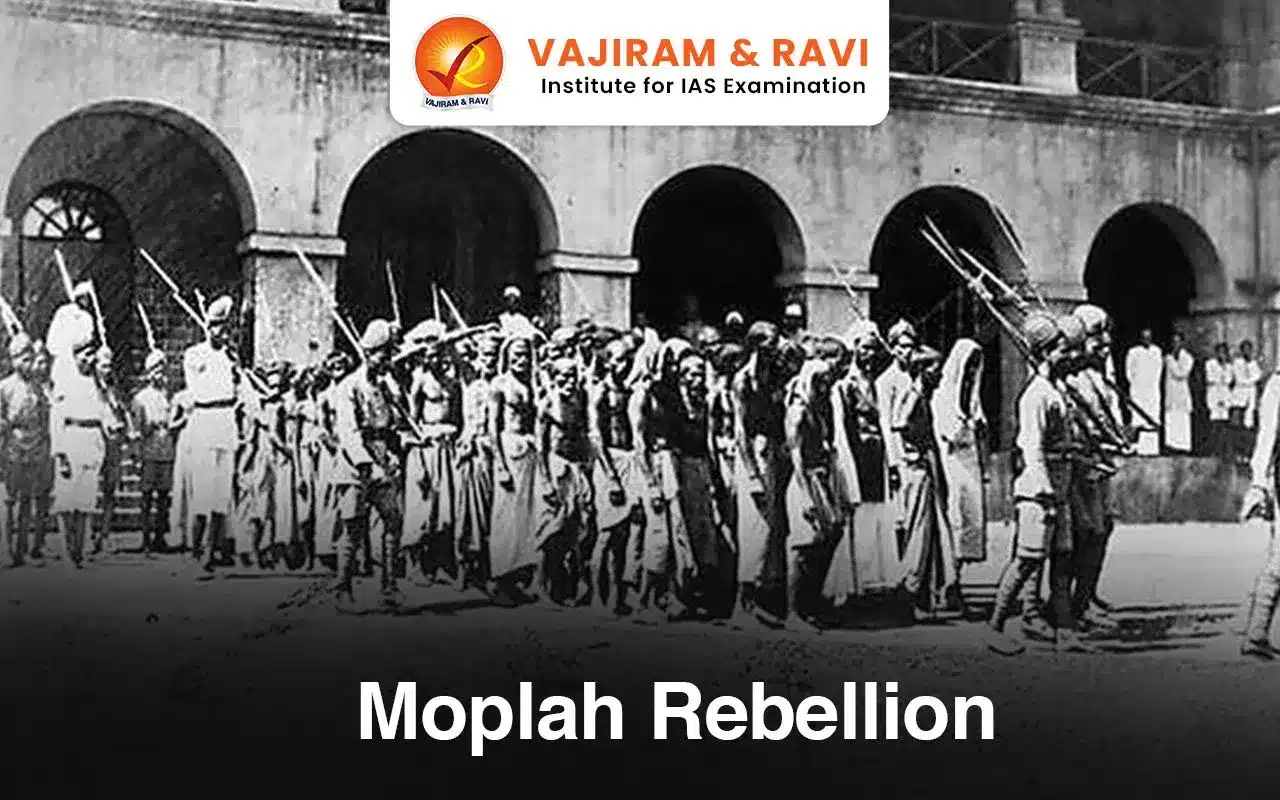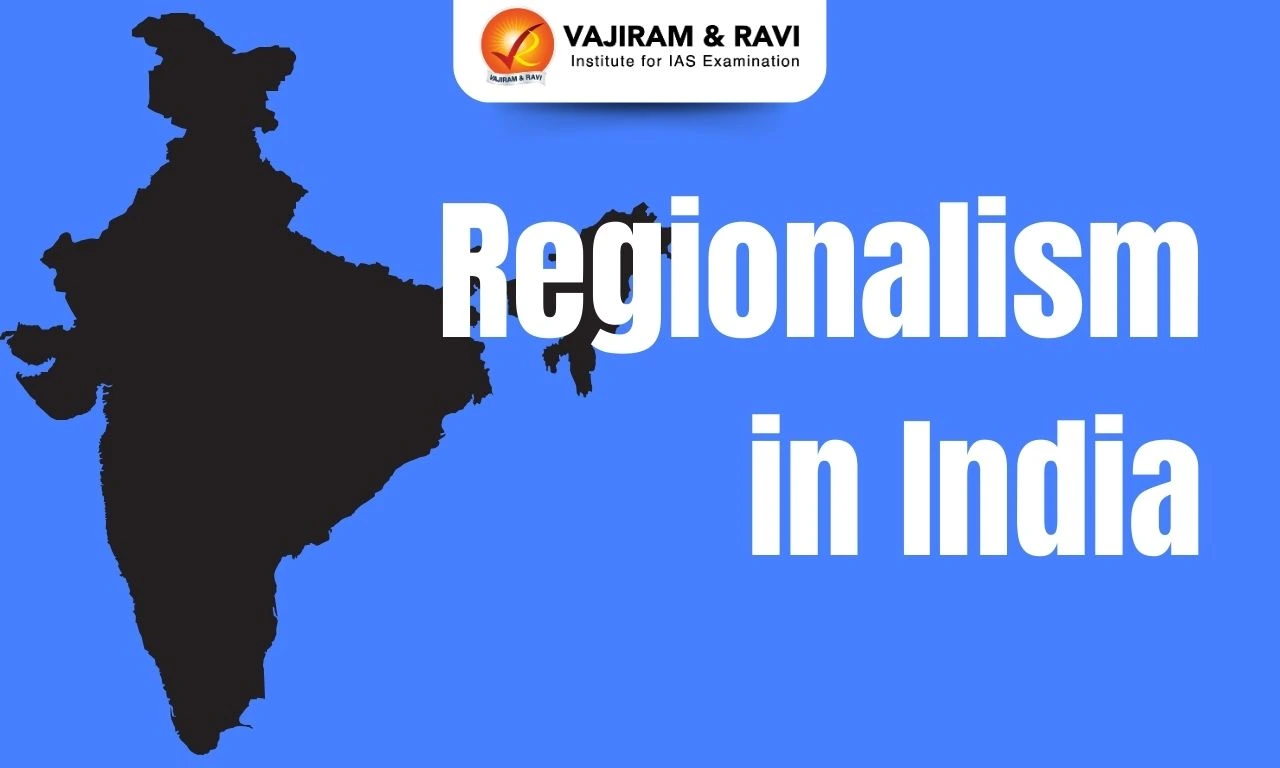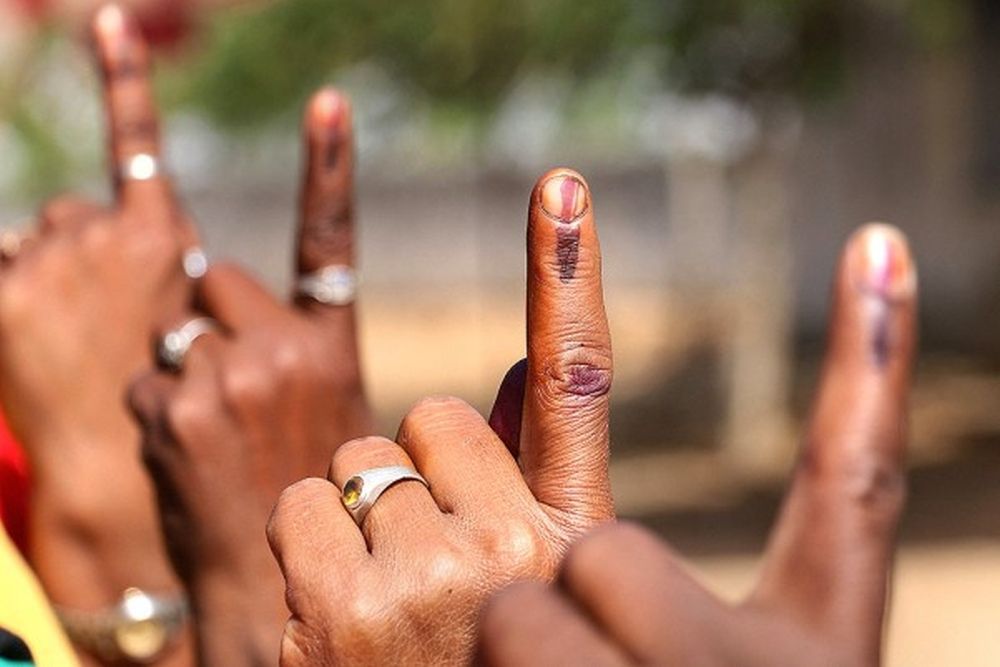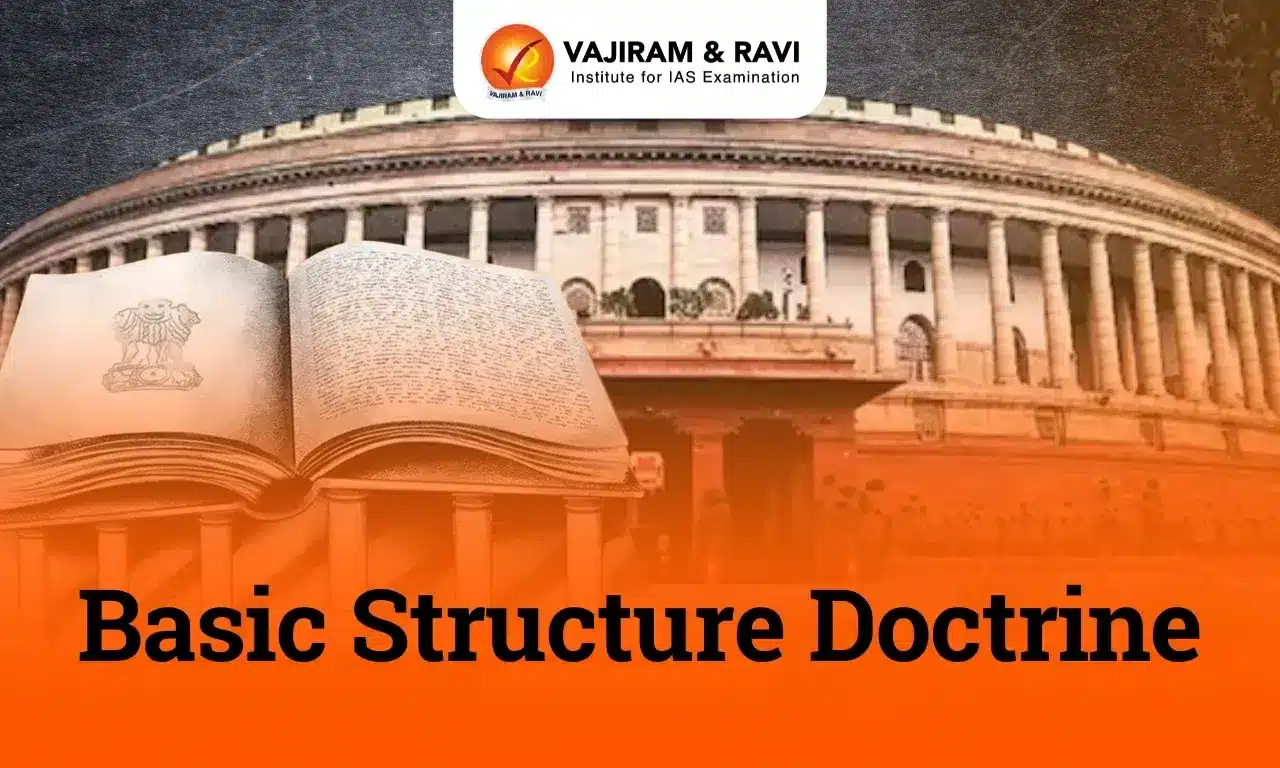The Moplah Rebellion, also known as the Mopla Rebellion or Mappila Rebellion, erupted in the Malabar region of Kerala in 1921. This uprising was a significant event in the history of British India, combining elements of agrarian unrest with religious and anti-colonial sentiments.
The Moplah Rebellion, primarily a peasant movement, was driven by a combination of socioeconomic, religious, and political factors. It was significantly impacted by the Khilafat movement and the Non-Cooperation movement. British authorities responded to the revolt by imposing martial law and eventually succeeded in suppressing it.
Moplah Rebellion Background
The Moplah community, primarily Muslims in the Malabar region of Kerala, had long-standing grievances against the local landlords, mainly Hindu upper-caste Nairs and Brahmins. The region witnessed sporadic revolts in the 19th century due to the following reasons:
- Land Ownership System in Malabar: Malabar had a hierarchical agricultural system, with Jenmis—primarily Namboothiri Brahmins and Nair chieftains—owning vast tracts of land that were hereditarily granted. They leased the land to tenants in return for a portion of the produce as they were unable to cultivate the land themselves.
- Invasion of Hyder Ali: As Malabar was conquered by Hyder Ali of Mysore in the late 1700s, Hindu landlords fled from Malabar, fearing persecution and forced conversion. As a result, Moplah tenants gained greater control over the fields they cultivated.
- The defeat of Tipu by the British: Following the defeat of Tipu in the 4th Anglo-Mysore war, Malabar was seized by the British and incorporated into the Madras Presidency. With British assistance, the Jenmis made a comeback and recaptured their territory.
- Land Reforms: Eventually the Jenmis were able to remove the Moplah tenants and raise rents dramatically after the British imposed new legislation that recognized Jenmis’ lands as private property. This resulted in numerous disputes and riots between 1836 and 1896.
Moplah Rebellion Causes
The Moplah Rebellion of 1921 was a revolt of the local Muslim tenants, who had been oppressed for long by the Hindu landlords and the British authority. It was the result of a combination of socioeconomic, religious, and political factors. The Khilafat movement and the Non-Cooperation movement led by Mahatma Gandhi also fueled their revolt. The immediate causes of the rebellion are as follows:
- Land Tenure System and Agrarian Discontent: The British-imposed land tenure system favored the landlords, imposing high rents (as high as 75–80% of net produce) and harsh conditions on tenants, leading to widespread exploitation.
- Economic Hardship: Tenants were often evicted without compensation, leading to extreme economic hardship, poverty, and frustration among the Mappilas.
- Impact of Khilafat Non-Cooperation Movement: The Khilafat movement, which aimed to protect the Ottoman Caliphate, resonated deeply with the Indian Muslims, including the Mappilas. Its failure and the abolition of the Caliphate by the Turkish government in 1924 contributed to the growing unrest. In Malabar, the Non-Cooperation Movement of 1920 stirred the anti-British sentiments among the Mappilas, who had grievances against colonial rule.
Moplah Rebellion Events
The Moplah Rebellion began on August 20, 1921, in the town of Tirurangadi when a violent clash erupted between the Moplahs and the British police. This led to widespread rebellion across the Eranad and Valluvanad regions of Malabar. The insurgents attacked government offices, looted properties, and targeted the homes of Hindu landlords. The British administration responded brutally, deploying the Malabar Special Force to crush the revolt. By early 1922, the rebellion was largely suppressed.
Moplah Rebellion Leaders
The fall of the Ottoman Empire led to the establishment of insecurities and resentment among the Moplah, thus fueling the revolt. Many leaders came out and launched attacks on the Hindu landowners and British officials. Some of the prominent leaders who played pivotal roles in leading the Moplah Rebellion are:
- Variyamkunnath Kunjahammed Haji: A parallel Khilafat government was established by Variyamkunnath Kunjahammed Haji in Nilambur area. He tried to give the revolt a secular character by ensuring that the Hindus were not assaulted or subject to looting.
- Ali Musaliar: He was a spiritual leader and Khilafat supporter who emerged as one of the main leaders of the rebellion. Eventually, he was captured and executed by the British.
- Sayyid Alavi Tangal: A religious leader who inspired Moplahs to fight against British colonialism and Hindu landlords.
Moplah Rebellion Impacts
Initially a peasant revolt against the oppressive landlords, the Moplah Rebellion soon took on religious overtones. With time it became intertwined with the broader anti-colonial struggle against British rule. Its impacts were far-reaching, both in terms of communal relations and the freedom movement.
- Communal Tension: The Moplah Rebellion created a communal rift between the Hindu landlords and the Muslim peasants.
- Growth of Nationalism and Anti-Colonial Sentiment: Although it started as a local peasant uprising, it was linked with the Khilafat Movement and the Non-Cooperation Movement, both aimed at resisting British rule.
- Deviation from Non-Cooperation: Gandhi’s Non-Cooperation Movement was based on nonviolent resistance against British rule. The Moplah Rebellion’s turn towards violence and its departure from Gandhian principles of peaceful protest led Gandhi to distance himself.
- Wagon Tragedy: When the rebellion was near its end, on November 10, 1921, almost a hundred Muslim detainees were transported from Tirur to the Central Prison in Bellary via rail. Out of the 100 inmates, 70 of them died by suffocation inside the closed railroad wagon.
Last updated on April, 2025
→ UPSC Notification 2025 was released on 22nd January 2025.
→ The UPSC Vacancy 2025 were released 1129, out of which 979 were for UPSC CSE and remaining 150 are for UPSC IFoS.
→ UPSC Admit Card 2025 is expected to release in first week of May for CSE Prelims Exam 2025.
→ The UPSC Prelims 2025 is scheduled to be conducted on 25th May 2025 and UPSC Mains 2025 will be conducted on 22nd August 2025.
→ Apply once through it and aspirants can apply for various government exams conducted by UPSC.
→ The UPSC Selection Process is of 3 stages-Prelims, Mains and Interview.
→ UPSC Result 2024 is released with latest UPSC Marksheet 2024. Check Now!
→ UPSC Toppers List 2024 is released now. Shakti Dubey is UPSC AIR 1 2024 Topper.
→ Also check Best IAS Coaching in Delhi
Moplah Rebellion FAQs
Q1. Who started the rebellion of Moplah?+
Q2. Who was the Viceroy of India during the Moplah uprising?+
Q3. Which state is the tribe of Moplah?+
Q4. Did Gandhi support the Moplah Rebellion?+
Q5. How did the Moplah Rebellion end?+
Tags: moplah rebellion quest















